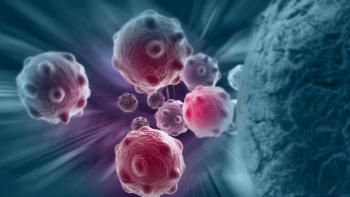
Gaps Exist Between Patient Perception, Physician Recollection of MPN Visits
Patients with myeloproliferative neoplasms revealed discrepancies between patient and physician recollection of management and communication in a research survey.
More than one-third of patients with myeloproliferative neoplasms (MPNs) who responded to a research survey were not “very satisfied” with their physician’s overall management and communication, according to the results of a study
“This analysis of MPN Landmark survey data suggests that patient and physician respondents often view the assessment of MPN prognosis, disease burden, and treatment goals differently, with physician respondents overestimating the ability of patients to recognize symptoms as MPN-related,” wrote Ruben A. Mesa, MD, of Mayo Clinic Cancer Center in Scottsdale, Arizona, and colleagues.
For the MPN Landmark survey, the researchers surveyed 813 patients with MPNs and 457 hematologists/oncologists who treated patients with these conditions.
Survey results showed that although a large proportion of physicians reported using prognostic risk classifications with their patients (myelofibrosis [MR]: 83%; polycythemia vera [PV]: 59%; and essential thrombocythemia [ET]: 77%), a smaller percentage of patients remember the use of these classifiers (MF: 54%; PV: 17%; ET: 31%).
In addition, differences were noted between patient perception of physician management and the practices reported by physician respondents. Larger proportions of physicians recalled asking patients about their most important MPN-related symptoms during a symptom assessment, as well as referring to a list of potential symptoms. In contrast, patients reported less specific symptom assessments. For example, about one-half or more patients (MF: 49%; PV: 64%; ET: 76%) did not understand that difficulty sleeping could result from their MPNs, whereas, physicians reported that “all” or “almost all” of their patients recognized their symptoms as MPN-related.
“MPN-related symptoms have been associated with reduced quality of life, suggesting that there is an opportunity to improve quality of life in patients who may be living with symptoms they do not realize are related to MPN,” the researchers wrote. “In addition to educating patients on MPN symptoms, physicians should proactively assess symptoms with early and regular use of formal patient-reported outcome instruments to accurately capture symptom severity and guide treatment decisions.”
Additionally, large percentages of patients reported experiencing symptoms at diagnosis (MF: 81%; PV: 89%; ET: 84%), but physician respondents reported smaller percentages of symptomatic patients for PV and ET.
Finally, results indicated differences in perceptions of treatment needs and goals. For patients, “slow/delay progression of condition” was the most important treatment goal in MF and PV, but physician respondents reported “symptom improvement” and “prevention of vascular thrombotic events” as the most important treatment goals for MF and PV, respectively. This difference in perception points to the fact that “improved patient education is needed to manage expectations and to help patients set achievable goals.”
Newsletter
Stay up to date on recent advances in the multidisciplinary approach to cancer.

















































































